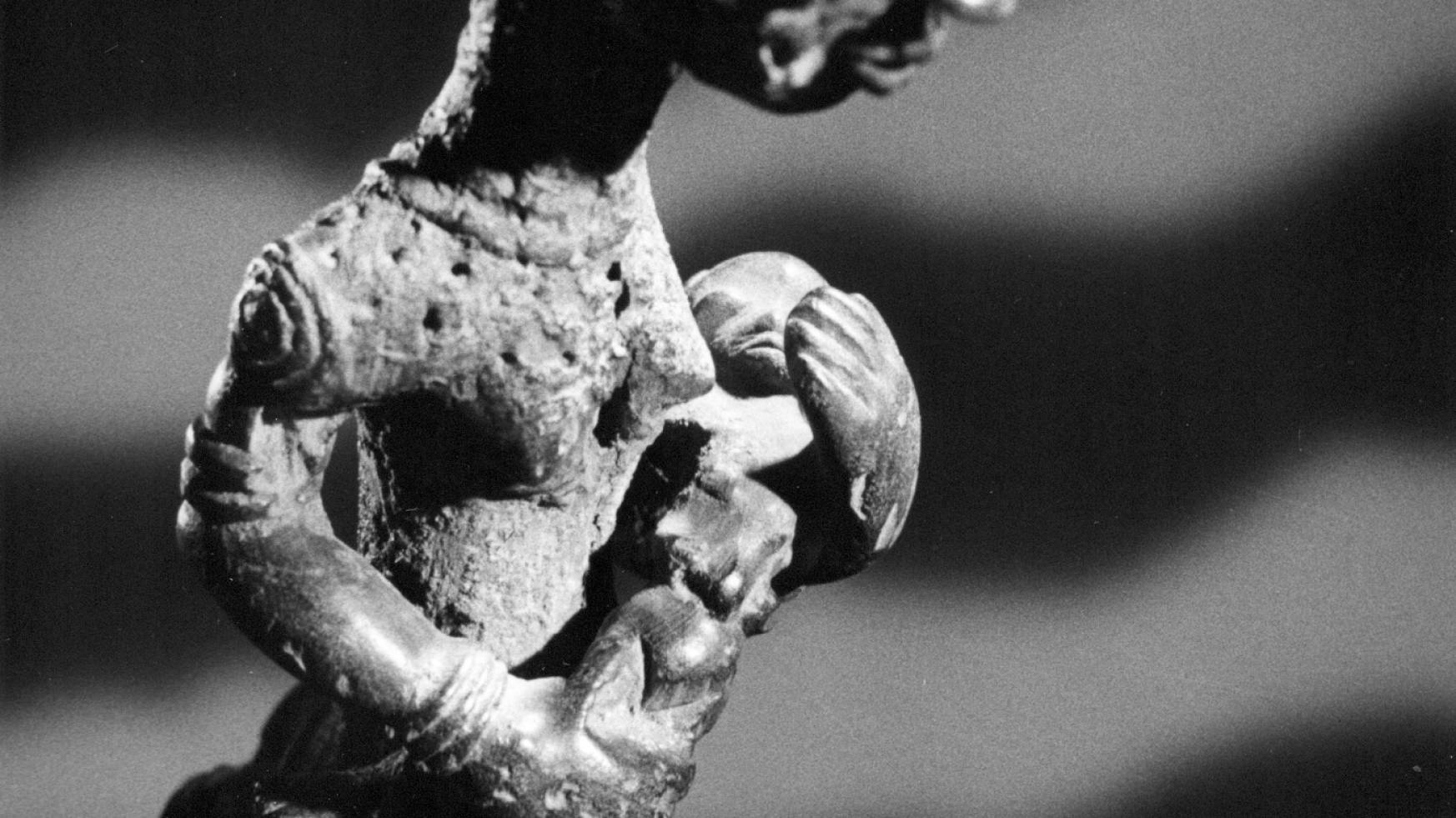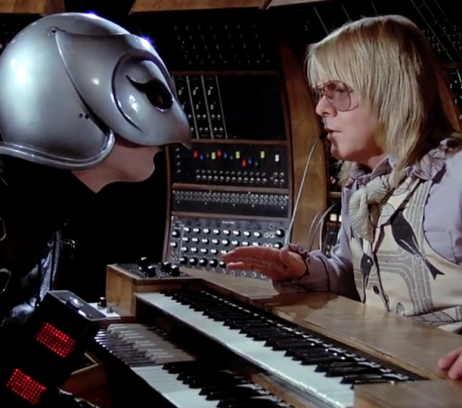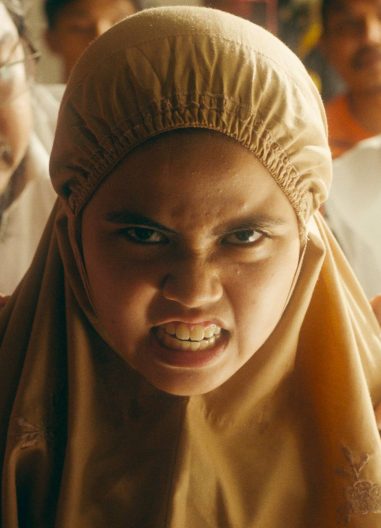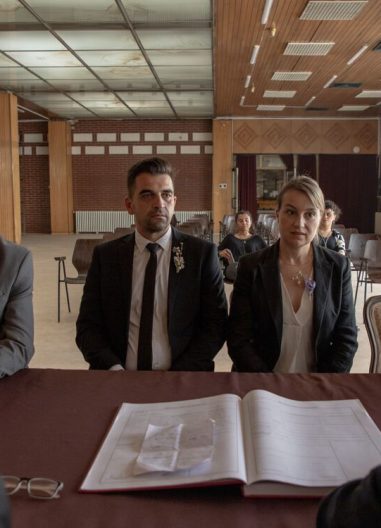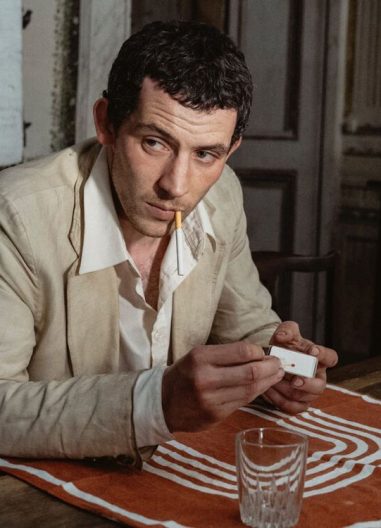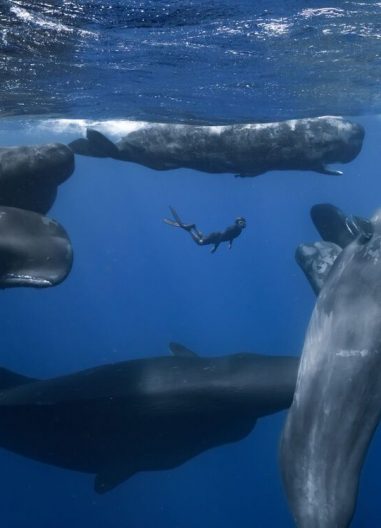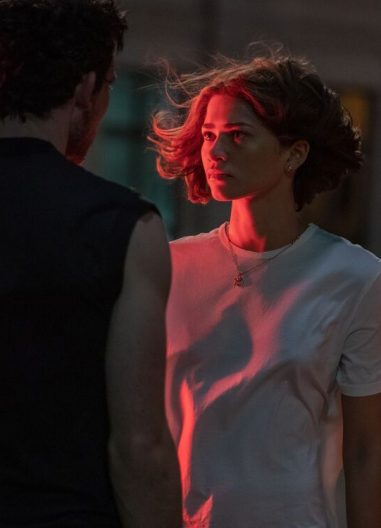Nuit et Brouillard
Drie shorts van Alain Resnais:
Nuit et brouillard
Alain Resnais, Chris Marker en Ghislain Cloquet, 1956, 30′, France, Germany
“Death makes his first pick. Another choice is made in the morning in the night and fog.”
Nuit et brouillard is een documentaire die afwisselt tussen verleden en heden met beeldmateriaal in zowel kleur als zwart wit. In het eerste deel van de film worden overblijfselen van Auschwitz getoond terwijl de verteller de opkomst van de Nazi ideologie beschrijft. Verderop vergelijkt de film het leven van de Schutzstaffel met dat van de gevangenen. De documentaire gaat in op het sadisme dat de gevangenen werd aangedaan zoals martelingen, executies en verkrachtingen en laat afbeeldingen van gaskamers en stapels lichamen zien.
Nuit et brouillard werd lovend ontvangen in 1956 en werd in de commerciële theaters van Parijs vertoond. De film won de Prix Jean Vigo, een Franse prijs voor jonge filmmakers. Jacques Doniol-Valcroze schreef in Cahiers du Cinéma dat de film vergelijkbaar was met het werk van kunstenaars als Francisco Goya en Franz Kafka. Bovendien verwees regisseur en filmcriticus François Truffaut naar de film als de beste film ooit gemaakt.
“Death makes his first pick. Another choice is made in the morning in the night and fog.”
Nuit et brouillard is a documentary that alternates between past and present, using both colour and black-and-white footage. The first part of the movie shows remnants of Auschwitz while the narrator describes the rise of Nazi Ideology. Further the film continues with comparisons of the life of the Schutzstaffel to the starving prisoners. The documentary addresses the sadism that was inflicted upon the doomed inmates, like torture, executions, rape and depicts images of gas chambers and piles of bodies.
Nuit et brouillard received very high acclaim in France upon its release in 1956 and was shown in commercial theaters in Paris. The film was awarded the Prix Jean Vigo, an award for young filmmakers. Jacques Doniol-Valcroze wrote in Cahiers du Cinéma that the film was comparable to work of artists Francisco Goya and Franz Kafka. Furthermore, French film critic and director François Truffaut referred to Nuit et brouillard as the greatest film ever made.
Les statues meurent aussi
Alain Resnais, Chris Marker en Ghislain Cloquet, 33′, France, 1953
“When men die they enter into history. When statues die they enter into art. This botany of death is what we call culture.”
Les statues meurent aussi bediscussieert de perceptie van Afrikaanse beeldhouwkunst vanuit historisch en hedendaags Europees perspectief. De notie van een dood beeld is aanwezig gedurende de hele film. Het dode beeld wordt uitgelegd als een beeld dat haar originele, tijdelijke betekenis heeft verloren en gereduceerd is tot een museumobject vergelijkbaar met een dood persoon in de geschiedenisboeken. De nadruk ligt echter op Afrikaanse en Europese kunstgeschiedenis als een onafscheidelijke menselijke cultuur.
Dit essay, geregisseerd door Alain Resnais, Chris Marker en Ghislain Cloquet gaat over historische Afrikaanse kunst en de effecten die het kolonialisme had op deze kunst. In 1954 won de film de Prix Jean Vigo. Omdat de film het kolonialisme sterk bekritiseerde, was de tweede helft van de film in Frankrijk tot 1960 verboden.
“When men die they enter into history. When statues die they enter into art. This botany of death is what we call culture.”
Les statues meurent aussi discusses the perception of African sculptures from a historical and contemporary European perspective. The idea of a dead statue is present throughout the whole film, dead statue is explained as a statue which has lost its original, timely significance and has become reduced to a museum object similarly to a dead person who can be found in history books. The emphasis however is put on regarding African and European art history as one inseparable human culture.
This essay film directed by Alain Resnais, Chris Marker and Ghislain Cloquet is about historical African art and the effects colonialism had on the way this art was and is perceived. In 1954, the film won the Prix Jean Vigo award. Due to its criticism of colonialism, the second half of the film was banned in France until the late 1960s.
Toute la mémoire du monde
Alain Resnais, 22′, France, 1956
Deze korte film is een essay over de potenties en limitering van het plichtsgetrouw archiveren van menselijke kennis, vermomd als documentaire over de organisatie van de Bibliothèque Nationale de France.
This short film is an essay on the potential and the limits of dutifully archived human knowledge, masquerading as a documentary on the organization of the Bibliothèque Nationale de France.
Kies tijdstip
- filmspecial
Drie shorts van Alain Resnais:
Nuit et brouillard
Alain Resnais, Chris Marker en Ghislain Cloquet, 1956, 30′, France, Germany
“Death makes his first pick. Another choice is made in the morning in the night and fog.”
Nuit et brouillard is een documentaire die afwisselt tussen verleden en heden met beeldmateriaal in zowel kleur als zwart wit. In het eerste deel van de film worden overblijfselen van Auschwitz getoond terwijl de verteller de opkomst van de Nazi ideologie beschrijft. Verderop vergelijkt de film het leven van de Schutzstaffel met dat van de gevangenen. De documentaire gaat in op het sadisme dat de gevangenen werd aangedaan zoals martelingen, executies en verkrachtingen en laat afbeeldingen van gaskamers en stapels lichamen zien.
Nuit et brouillard werd lovend ontvangen in 1956 en werd in de commerciële theaters van Parijs vertoond. De film won de Prix Jean Vigo, een Franse prijs voor jonge filmmakers. Jacques Doniol-Valcroze schreef in Cahiers du Cinéma dat de film vergelijkbaar was met het werk van kunstenaars als Francisco Goya en Franz Kafka. Bovendien verwees regisseur en filmcriticus François Truffaut naar de film als de beste film ooit gemaakt.
“Death makes his first pick. Another choice is made in the morning in the night and fog.”
Nuit et brouillard is a documentary that alternates between past and present, using both colour and black-and-white footage. The first part of the movie shows remnants of Auschwitz while the narrator describes the rise of Nazi Ideology. Further the film continues with comparisons of the life of the Schutzstaffel to the starving prisoners. The documentary addresses the sadism that was inflicted upon the doomed inmates, like torture, executions, rape and depicts images of gas chambers and piles of bodies.
Nuit et brouillard received very high acclaim in France upon its release in 1956 and was shown in commercial theaters in Paris. The film was awarded the Prix Jean Vigo, an award for young filmmakers. Jacques Doniol-Valcroze wrote in Cahiers du Cinéma that the film was comparable to work of artists Francisco Goya and Franz Kafka. Furthermore, French film critic and director François Truffaut referred to Nuit et brouillard as the greatest film ever made.
Les statues meurent aussi
Alain Resnais, Chris Marker en Ghislain Cloquet, 33′, France, 1953
“When men die they enter into history. When statues die they enter into art. This botany of death is what we call culture.”
Les statues meurent aussi bediscussieert de perceptie van Afrikaanse beeldhouwkunst vanuit historisch en hedendaags Europees perspectief. De notie van een dood beeld is aanwezig gedurende de hele film. Het dode beeld wordt uitgelegd als een beeld dat haar originele, tijdelijke betekenis heeft verloren en gereduceerd is tot een museumobject vergelijkbaar met een dood persoon in de geschiedenisboeken. De nadruk ligt echter op Afrikaanse en Europese kunstgeschiedenis als een onafscheidelijke menselijke cultuur.
Dit essay, geregisseerd door Alain Resnais, Chris Marker en Ghislain Cloquet gaat over historische Afrikaanse kunst en de effecten die het kolonialisme had op deze kunst. In 1954 won de film de Prix Jean Vigo. Omdat de film het kolonialisme sterk bekritiseerde, was de tweede helft van de film in Frankrijk tot 1960 verboden.
“When men die they enter into history. When statues die they enter into art. This botany of death is what we call culture.”
Les statues meurent aussi discusses the perception of African sculptures from a historical and contemporary European perspective. The idea of a dead statue is present throughout the whole film, dead statue is explained as a statue which has lost its original, timely significance and has become reduced to a museum object similarly to a dead person who can be found in history books. The emphasis however is put on regarding African and European art history as one inseparable human culture.
This essay film directed by Alain Resnais, Chris Marker and Ghislain Cloquet is about historical African art and the effects colonialism had on the way this art was and is perceived. In 1954, the film won the Prix Jean Vigo award. Due to its criticism of colonialism, the second half of the film was banned in France until the late 1960s.
Toute la mémoire du monde
Alain Resnais, 22′, France, 1956
Deze korte film is een essay over de potenties en limitering van het plichtsgetrouw archiveren van menselijke kennis, vermomd als documentaire over de organisatie van de Bibliothèque Nationale de France.
This short film is an essay on the potential and the limits of dutifully archived human knowledge, masquerading as a documentary on the organization of the Bibliothèque Nationale de France.

